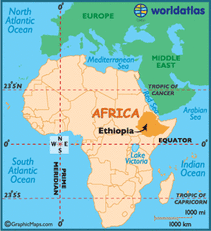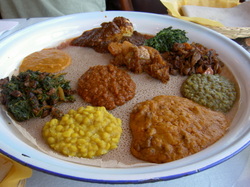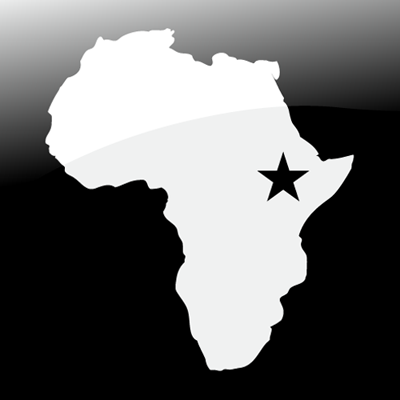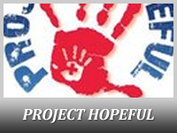The USA heard a lot about famine in Ethiopia in the 1980's, but it is still a problem today. This video goes in depth on the endless cycle of famine. It is an 18 minute video, but if you have time to at least watch the first half of the video you'll see some of the different regions and people of Ethiopia. Around minute 12 or 13 you'll see the capital city Addis Ababa, which is where we will be picking up our child.
0 Comments
 GEOGRAPHY
Ethiopia is a landlocked country in the Horn of Africa and is bordered by Eritrea to the north, Sudan to the west, Djibouti and Somalia to the east, and Kenya to the south. With just over 435,000 square miles (almost twice the size of Texas), Ethiopia is the world’s 27th largest country. LANGUAGE There are over 80 different languages spoken throughout Ethiopia, but Amharic is the official and most-spoken language in the country. RELIGION Christians (mainly Ethiopian Orthodox) make up a little over 60% of Ethiopia’s population. Another 32% are Muslim, while 3% of the population practices other religions. CALENDAR Ethiopia uses the Coptic calendar which is almost 8 years behind the Gregorian calendar. It includes twelve 30-day months and a 13th month of five days (six days in leap years). The current year according to the Ethiopian calendar is 2003, which began on September 11, 2010 of the Gregorian calendar. THE ETHIOPIAN CLOCK Ethiopia has 24 hours in a day. However, Ethiopia has shifted their clock by six hours so that the clock rolls over at 6 am - the start of the day. This is done due to the fact that Ethiopia is located near the equator and the sun comes up at the same time every day of the year. http://itsalmostnaptime.blogspot.com/2010/02/i-dont-want-my-children-to-be-happy.html
This blog post was sent to me last Spring by Angi or Tonia (I can't remember which, but it had to be one of them) and it really inspired me as we were just beginning to take on the commitment of this adoption. We were nervous about the expenses and not knowing where the money would come from. But reading this made me realize that it didn't matter. We may drive ten-year-old cars for the rest of our lives and our children may never have the big swing set. But we're okay with that. In fact, we're pleased. We want to thank our parents, Amanda, Julie, Tonia, Cain, and Mark for purchasing iPad tickets!
 Ethiopian cuisine is unique to say the least. We recently tried Ethiopian food and instantly fell in love with it. Needless to say, it’s different than anything we’re used to eating here in the States.
One distinctive characteristic of Ethiopian dining is the lack of utensils. Instead of forks, knives, or spoons, Ethiopians use what’s called injera which is defined as “a yeast-risen flat bread with a unique, slightly spongy texture.” It’s kind of like a thin pancake. Injera is served on the side. Food is served on one big platter and is meant to be shared by a small group. Several colorful entrees sit atop the platter, making it look like a giant painter’s palette. The platter is lined with a layer of injera as well. To start, you tear off a piece of the injera bread and use it to pick up a piece of food - traditionally, you eat with your right hand only. Once you have the desired amount of food, you pop the whole thing in your mouth. When all the piles of food have been consumed, eat the underlying injera which absorbs all of the juices - this is usually considered the best part of the meal. We were accepted into America World Adoption Association's Ethiopia program on February 19th, 2010. We completed the "paperchase" portion of the process in August. That means, we've collected everything we needed for our dossier, including our homestudy, background checks, fingerprinting, passports, letters of reference (thank you Tonia, Bart and Martha), and about a thousand other notarized documents (thank you Darla).
Our dossier was sent to Ethiopia on August 27th, 2010 and this is the date our wait officially begins. Our dossier arrived in Addis Ababa, Ethiopia labor day weekend. (Addis Ababa is the capitol of Ethiopia- see the map.) AWAA says that the expected wait time for a referral for an infant female is 7 - 11 months, but recently families have recieved their referrals as quickly as five months. (A referral is the name, picture, medical history and any known family information for the child you've been matched with for adoption. We can accept or decline the referral. But since the agency does everything they can to provide us with a match to our request - a healthy infant female 0-9 months - there should be no reason to decline.) After we accept our referral, we will travel to Ethiopia to meet our child and appear in court to testify that we are willing to adopt her. Then we fly back home without her. We'll have to wait 5 - 12 weeks for her adoption paperwork to be completed. Then, we finally get to go back to Ethiopia to pick her up and bring her home! And you can expect your invitation in the mail for a huge welcome home party! I want to clarify that it doesn't take 7 - 11 months for our agency to find an infant female for us to adopt, there are more orphan infants than will ever be adopted. The wait is due to the fact that the adoption agencies are small and can only handle so many familes at a time and there are only so many people working in the Ethiopian government passing the adoption paperwork through the system. Why a daughter?
We already have a son! Why Ethiopia? Ethiopia is a country of 77 million people. Half of the population is under 20 years old. Of the 77 million, approximately 4.3 million are orphaned children. That means there are more orphaned children in Ethiopia than there are people living in Los Angeles. Although Ethiopia has been a successful and self-sufficient country throughout history, in recent years it has been hit hard with famine and HIV/AIDS. The orphan crisis has scaled out of control and beyond the capabilities of their own resources. In the past ten years, some of these orphans have found families through international adoption. Roughly 2200 were adopted by Americans last year. Adoption is not a solution to Ethiopia's problems, but for many of Ethiopia's orphans, international adoption is their only chance at being a part of a family again. I have decided to create this blog to inform our family and friends about Ethiopia and international adoption. I plan to update the blog weekly with information about Ethiopia and adoption with websites and information that Logan and I have found helpful throughout our process. We realize that we have had a year to prepare and educate ourselves on adoption and Ethiopia, but many of you still have questions. So we would like to use this blog to share with you what we've learned. Please feel free to comment and ask questions.
|









 RSS Feed
RSS Feed